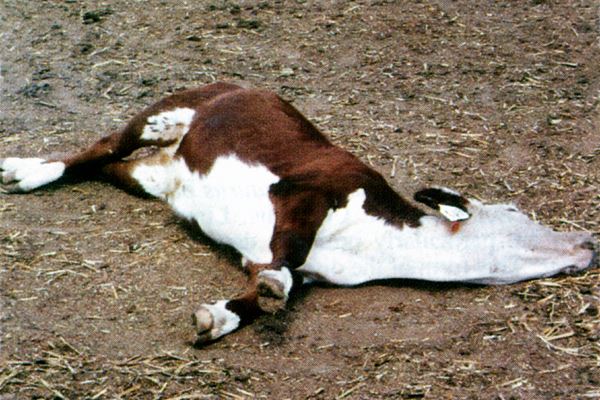By Ndumiso Tshuma
In a concerted effort to address the growing threat of Heartwater disease among livestock, experts are urging communities to increase awareness and implement preventative measures to combat this potentially fatal illness.
Heartwater disease, which affects goats, sheep, and cattle, poses significant risks to both animal health and farmers’ livelihoods.
Manyabi Nqobani, an animal science specialist at EL Ganado Consultancy, a company specialising in livestock disease prevention and treatments, highlighted the urgency of raising awareness and promoting preventative strategies.
Nqobani explained that Heartwater disease, a severe condition transmitted by Bont Ticks, is common in hot, dry bush areas and presents a significant threat to livestock.
“The consequences of Heartwater disease include sudden deaths, miscarriages, and increased production costs for farmers,” Nqobani said, noting that the disease can cause animals to die within 24 hours, although in some cases, death occurs within two to five days.
Symptoms of Heartwater include high fever and neurological signs, such as animals walking in circles, exhibiting a stepping gait, or showing paddling movements while lying down.
“One key symptom is the animal pulling its head backward when on the ground,” Nqobani added.
“Upon death, the animal will have excessive fluid in the heart sac, lungs, chest cavity, and abdominal cavity.”
To combat the disease, Nqobani stressed the importance of routine livestock dipping.
“Dipping should become a regular practice on farms. When Heartwater strikes, it’s often because animals weren’t dipped properly, or the acaricide was not mixed correctly,” he said.
He further recommended burning the carcasses of dead animals to kill any ticks that could transmit the disease to other livestock.
Nqobani also emphasised the importance of early treatment, suggesting the use of long-acting oxytetracycline drugs, as well as multivitamins for rapid recovery.
“Ketosol can be used to manage pain and fever,” he said.
In addition to discussing Heartwater disease, Nqobani underscored the benefits of urea treatment for crop residues, particularly during drought periods, to improve livestock nutrition.
“Farmers often have an abundance of crop residues that are low in crude protein and high in fibre, making them less beneficial as animal feed. Urea treatment enhances the nutritional quality of stover, increasing nitrogen content, and improving both its palatability and digestibility,” Nqobani explained.
For every 1 000 kg of stover, Nqobani recommended using 50 kg of urea and 200 litres of water, ensuring proper hydrolysis of the urea.
“The stover is layered in stacks, sprayed with water, and compacted before being covered with plastic and left for 21 to 35 days, depending on temperature. After treatment, the stover should be aired for seven days before feeding it to animals.”
Nqobani emphasised that various types of crop residues, including wheat straws, rice straws, and maize stover, can benefit from this treatment.
“The poorer the quality of the initial residue, the greater the impact of the treatment,” he said. Research shows that feeding livestock treated stover can significantly improve weight gain and milk production.
“Animals fed on untreated stover may lose weight, while those fed on treated stover can gain 50 to 100 grams per day. Milk yield also tends to increase by 0.5 to 1 litre.”
In conclusion, Nqobani pointed out that urea treatment of stover presents a sustainable approach to improving livestock nutrition and maximising the use of agricultural residues, contributing to both economic and environmental sustainability in the livestock sector.

